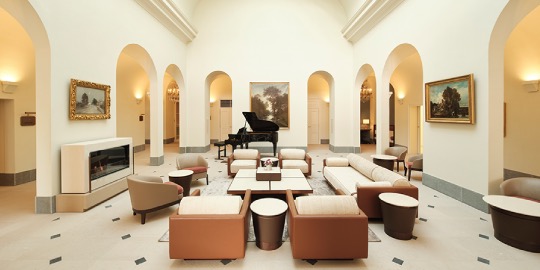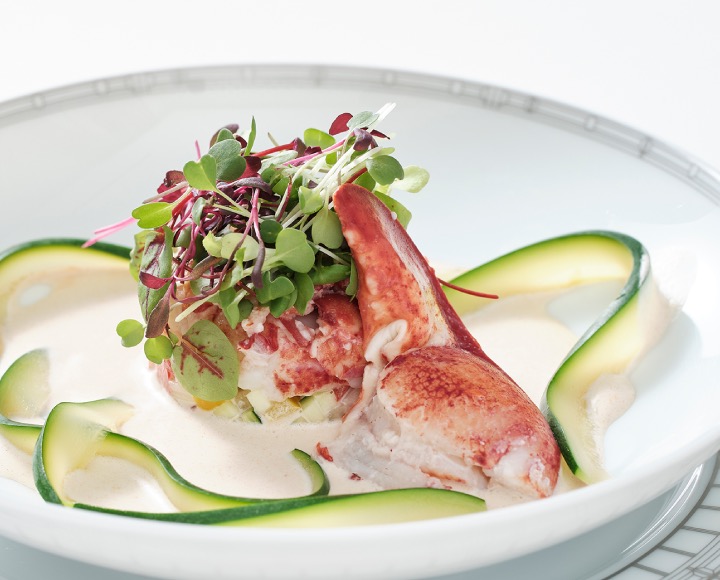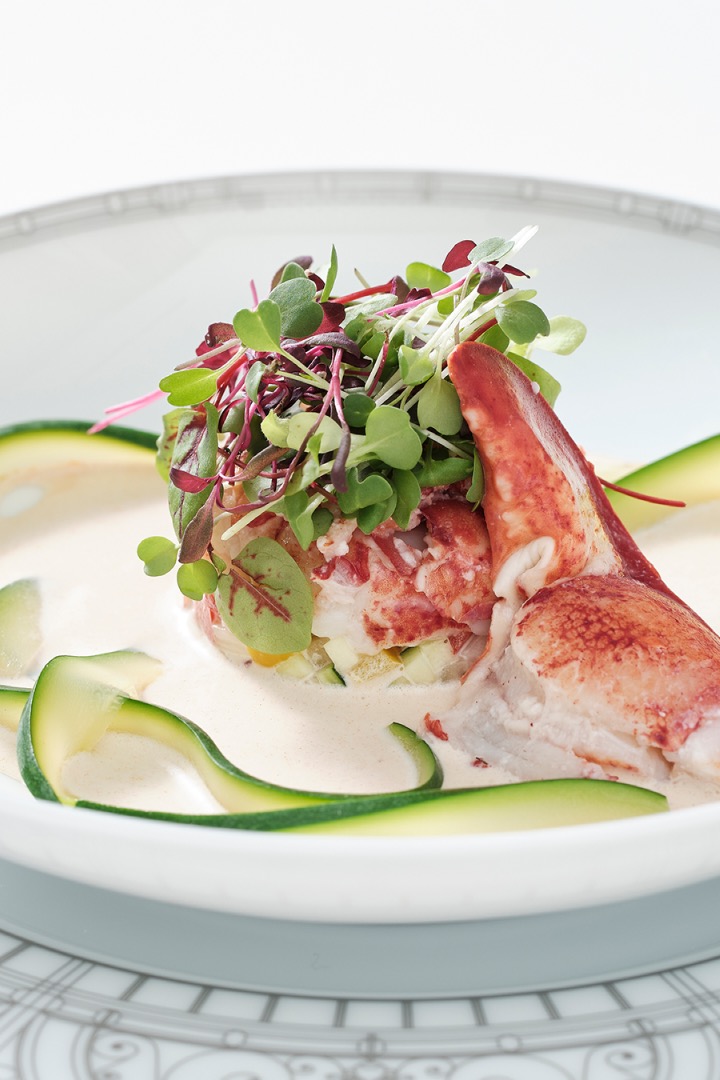Hotel de l’Alpage is adorned with paintings throughout its interiors, reflecting the charm of French homes, where artworks are a staple on the walls, seamlessly blending into the atmosphere as if they have always been there. Each painting in the hotel has been carefully selected by the owner to evoke this familiar and timeless ambiance.
We hope you experience how just one painting can transform the mood and atmosphere of a space, bringing the essence of an “art-filled environment” to life.
This time, we would like to introduce the paintings displayed in our Reception Room.
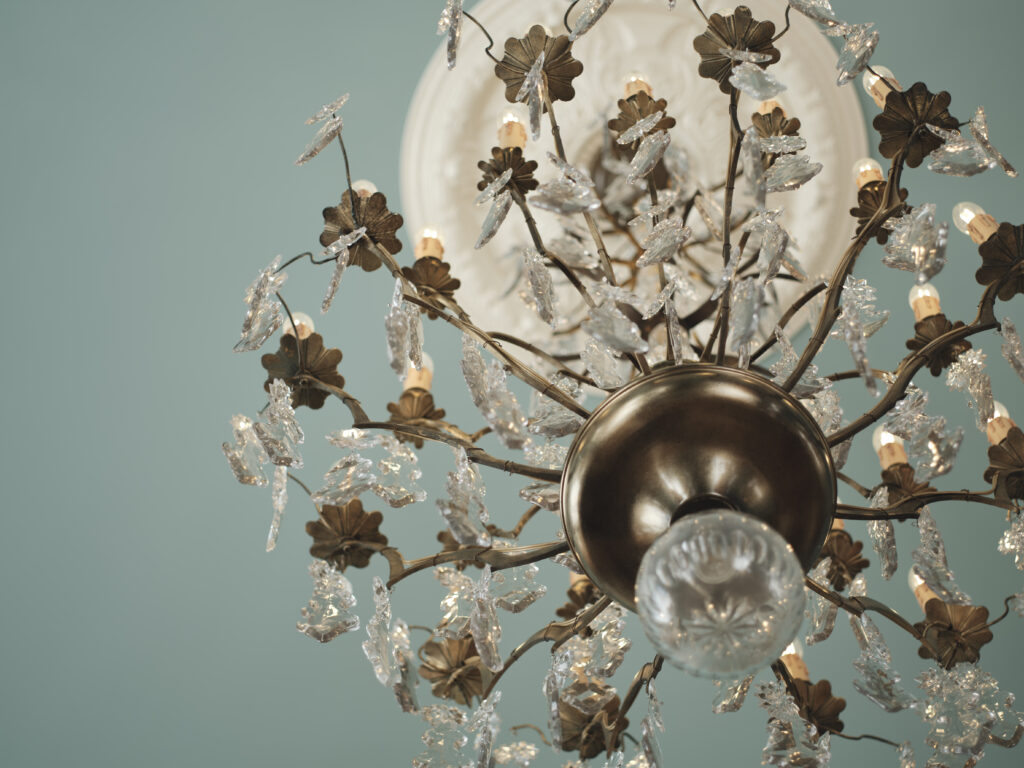
After passing through the entrance hall, with its soft white limestone from Comblanchien in Burgundy, France, guests arrive at the Reception Room. The floor transitions from stone to French herringbone parquet, and the wall colour shifts from the limestone’s off-white to a vibrant blue inspired by a “ballroom.” The space is dominated by an antique chandelier in the Louis XV style from the 18th century, setting the mood and theme of the room, which is centered around “Chinoiserie,” a trend that was wildly popular in Europe at the time. Not only the paintings but also the objects, chairs, and rugs are unified under this theme.
The most eye-catching piece in the Reception Room is the painting above the marble fireplace. It is the work of an unknown artist, painted in the style of Jean Pillement (1728 Lyon – 1808 Lyon), a master of Chinoiserie. The painting features vibrant colours and Chinese-inspired motifs, such as colourful parrots and flowers, along with a distinctive frame design.
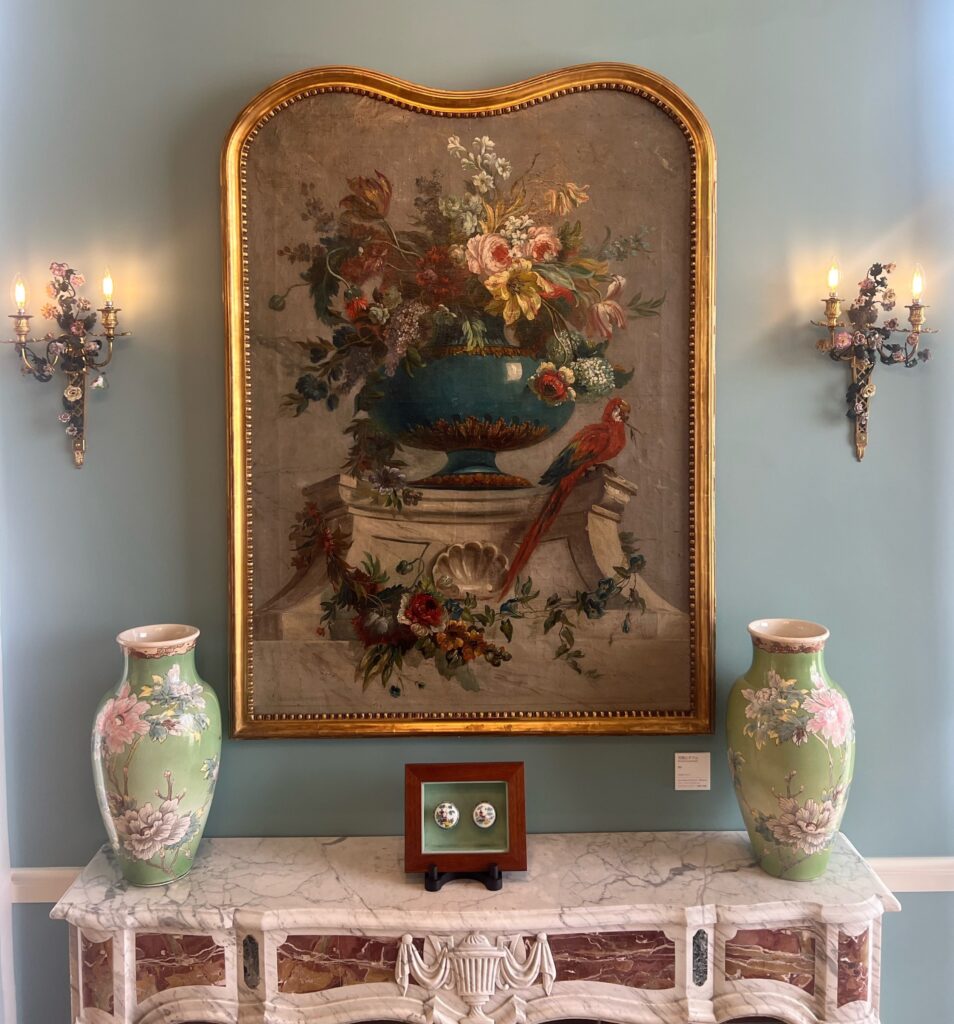
unnamed (18th century France)
Additionally, the Reception Room features elements important to 20th-century European interiors, including a Chinese rug and the iconic China Chair. At the far end of the room, you will find another 18th-century French painting depicting a Chinese pagoda, again in the style of Jean Pillement.
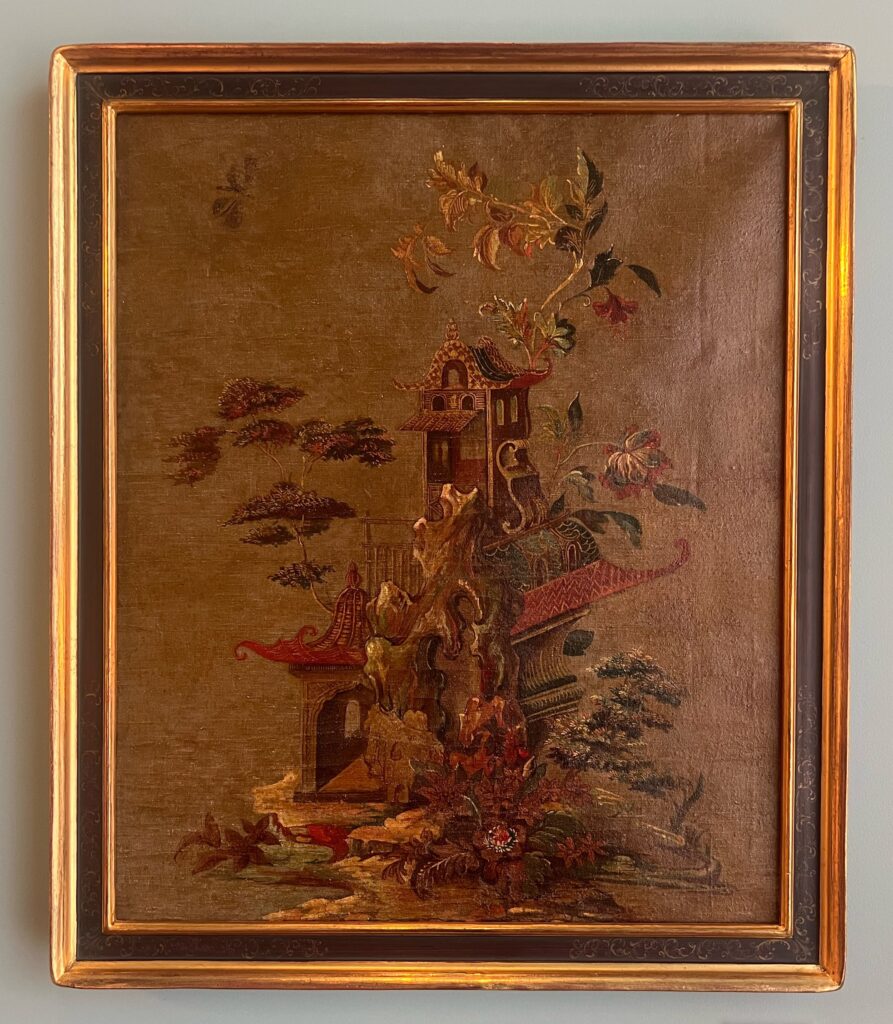
unnamed (18th century France)
In the 18th century, French society was captivated by English gardens, which were designed with the idea of “a world tour within a garden.” Alongside themes like Chinoiserie, Egyptian motifs (such as pyramids), and the recreation of natural landscapes, ancient Roman ruins were also a popular subject.
The watercolour painting immediately to the left as you enter the Reception Room depicts ancient Roman ruins in a fantastical style. Although the artist is unknown, the work is painted in the style of Jean-Henry-Alexandre Pernet, a prominent 19th-century artist.
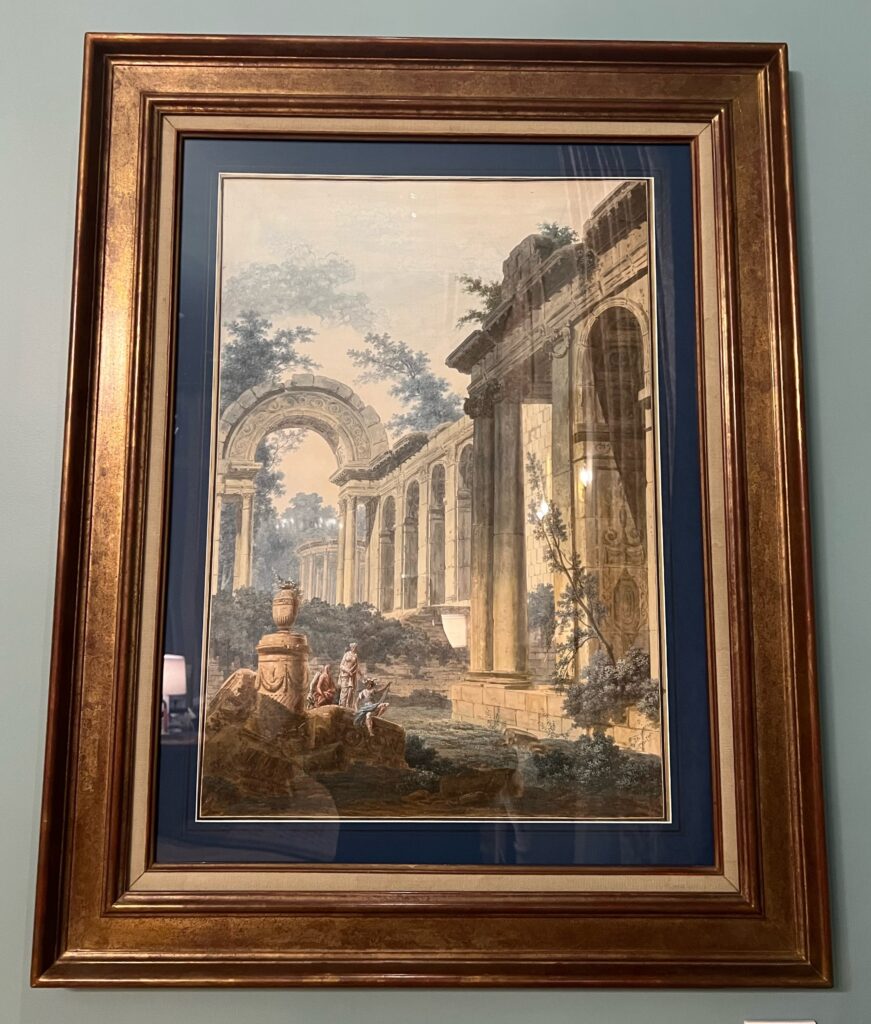
unnamed (Early 19th century France)
Additionally, in the second-floor corridor of the hotel, you will find art pieces, drawings and sketches themed around English gardens.
On the wall behind the check-in desk, there is a set of six 18th-century French paintings. These works depict famous maritime scenes from the era, most of which are based on identifiable original paintings. For example, the painting of a fire is inspired by Vernet’s depiction of the Great Fire of Smyrna.
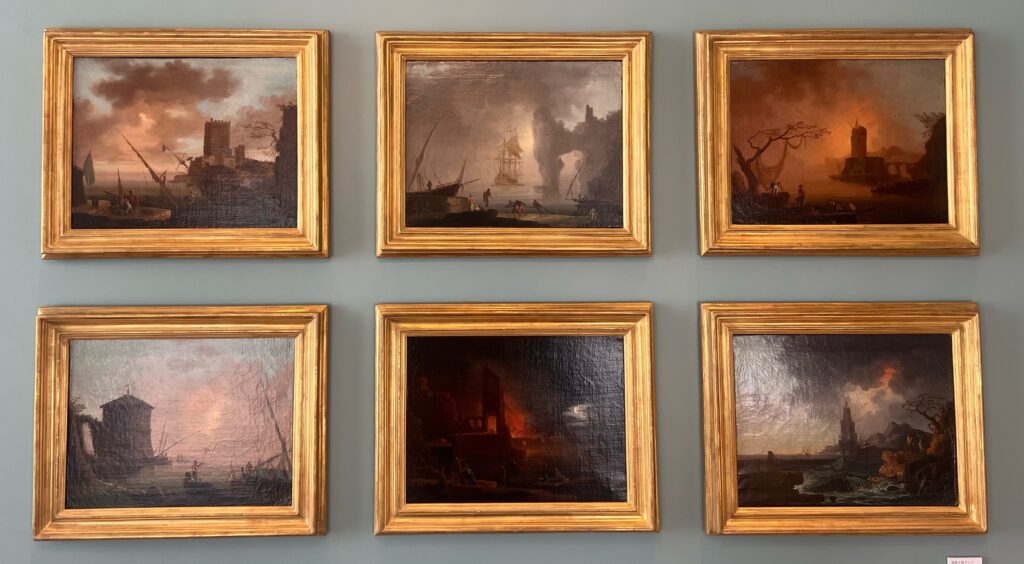
unnamed (18th century France)
The artworks displayed in this space are highly expressive, evoking a sense of longing for travel and distant lands. During the 18th and 19th centuries, sea voyages were the only means of long-distance travel, making maritime paintings deeply associated with the concept of journey. The themes of the Reception Room are twofold: the voyage across the seas and a world tour within an English garden.
Not only in the Reception Room but also throughout the hotel—in the spiral staircase and on the central table in the Winter Garden—Chinoiserie vases and objets d’art are displayed, adding a touch of vibrant colour to the interior.
To read more about the interior of the winter garden (Vol.1), please click here.

